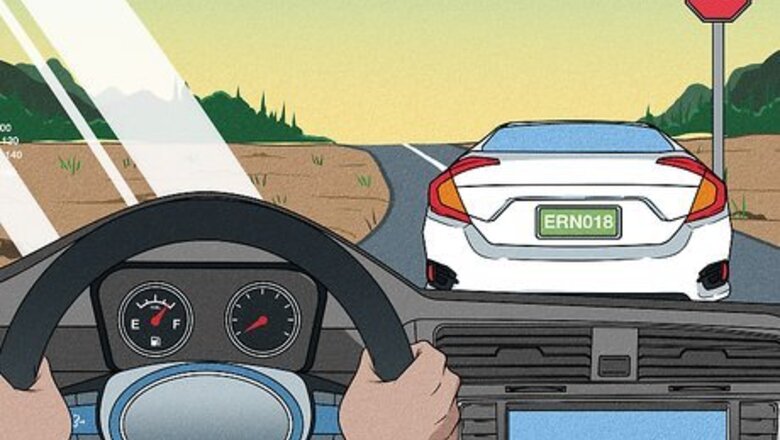
views
- Memorize information about the reckless driver’s car such as the make, model, color, license plate number, and any unique decals or stickers.
- Pull over in a safe area and call 911 or the local non-emergency number. Tell them the details of the vehicle as well as where the location of the reckless driving occurred.
- Check the website of your city's local police department to see if they have an online form where you can submit a reckless driving incident report.
Collecting Evidence
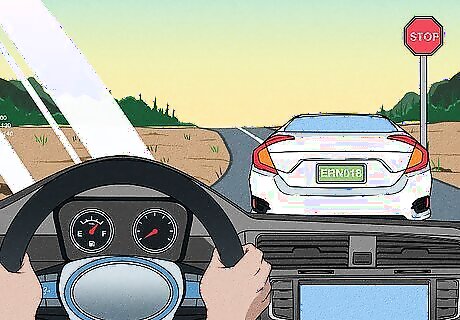
Make a note of a driver’s unsafe or aggressive behaviors. A reckless driver is someone whose driving has the potential to put others in danger and/or cause an accident. Only report someone if you think that they pose a serious risk to the people around them or have violated traffic rules. Some types of reckless behavior to report include: Speeding Driving extremely below the speed limit Weaving between cars and lanes Drifting between lanes or driving between two lanes Ignoring traffic signals and signs Excessive swerving Tailgating Road rage Street racing
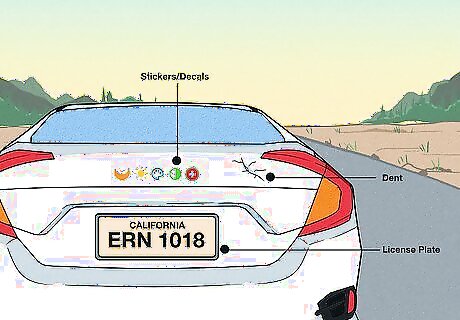
Note the car’s license plate number and any other physical features. When you make your report, giving as accurate of a description as possible of the vehicle will help law enforcement apprehend the driver. Take note of the vehicle’s make and model, the color, and the license plate number. Some other things that could help police identify the vehicle include: The state on the vehicle's license plate The number of doors on the vehicle Distinctive bumper stickers or decals Any obvious dents on the outside of the vehicle Important: Do not write down any information or record the reckless driver with your phone while you’re still driving. Do your best to memorize any details and pull over somewhere safe before writing anything down. If you have someone else in the car with you, ask them to write down the details or take a video.

Try to pick out details of the driver’s appearance. To help law enforcement catch the unsafe driver, come up with a general description of their physical appearance. Note things like their hair color, the kind of clothes they’re wearing, and any accessories they might have on. Also take note of any other passengers in the vehicle. Do not put yourself at risk by speeding up or tailgating the other driver in an attempt to see what they look like. If you can’t see them clearly, just focus on taking down notes about what their car looks like and their license plate number.
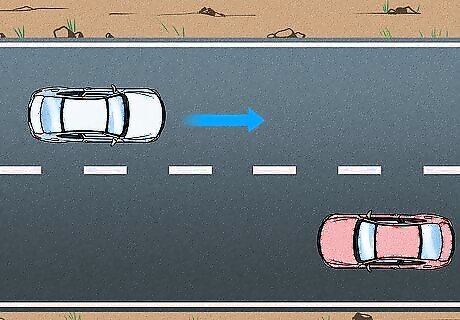
Pay attention to the location and the direction the car is heading. When you make your report, you’ll likely be asked where the reckless driving took place. Take note of the name of the road you’re on or any mile markers if you’re on a long highway or expressway. Also, pay attention to what direction the other driver is headed (north, south, east, west). The police might be able to pull them over faster if they can intercept them. Also, take note of the time the incident occurred at. Don’t attempt to follow the other car. If they’re driving recklessly, trying to follow them could put you and others in danger. Gather as much infromation as you can at a glance, then pull over to make your report.
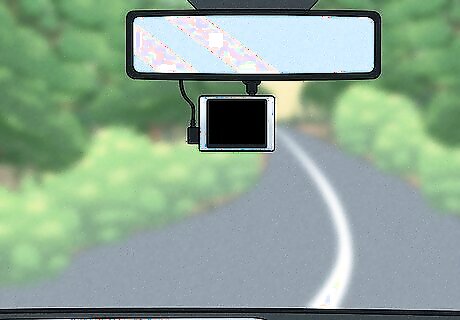
Mount a dashboard camera in your car to record evidence. While this, unfortunately, won’t be able to help you gather evidence for a previous incident, it can definitely help you report any future instances of reckless driving. When you make your report, show the video footage from the dash cam to the police. Some apps, like Nexar, turn your phone into a dashboard camera. However, these require you to have a dashboard mount for your phone.
Reporting by Phone
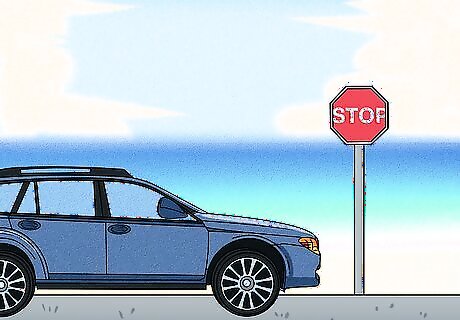
Pull your car over in a safe area away from traffic. To keep yourself and any passengers safe, move to a safe shoulder off of the road or into a parking lot. Make sure you’re completely out of the way of other vehicles and traffic and that your car is completely stopped before pulling out your phone. Once you’ve pulled over and parked the car, go ahead and call the police. If you have a passenger in the car, one option is to have them call the police and make the report while you drive.

Dial 911 if it’s an emergency situation. If the other person is driving extremely dangerously and putting other people at risk, call 911 as soon as you pull over to report them. When the dispatcher picks up, tell them you’d like to report a reckless driver and provide them with the information you’ve gathered. For example, you might say, "I'd like to report a reckless driver. There's a black SUV with Virginia plates speeding down I-40 West. I'm near mile marker 95. They’re swerving between lanes, and I think they may be dangerous to others."

Call a non-emergency number for less dangerous situations. If the reckless driver isn’t posing a direct threat to others, dial the local police’s non-emergency number. These will vary by state and city, so do a quick internet search to find the number for the area you’re in. Some states and local governments have special lines for reckless driving. For example, in Colorado, you have the option to call *277 to make a report. Look up to see if your state has a similar service.
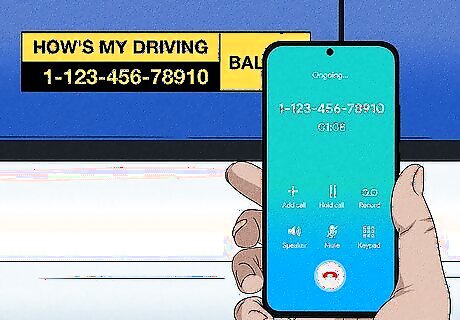
Call the phone number on a “How’s my driving?” sticker. If the vehicle has a yellow “How’s my driving?” sticker, call the phone number written on it to make your report. There will also usually be an ID number that you’ll need to provide the operator when calling. “How’s my driving?” stickers are usually on vehicles belonging to fleet businesses. You can say, "I'd like to report truck #555. They were tailgating my car and then they were driving almost 20 miles per hour above the speed limit while going west down I-90." Similarly, If the reckless driver was in a company truck, car, or vehicle, report their unsafe driving to their employer. Only do this if the driver was in a clearly marked company vehicle.
Making a Report Online
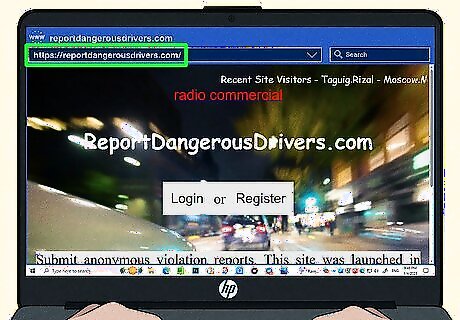
File a report to a national database. If you were able to get the license plate number of the car, submit the information to a national database, such as ReportDangerousDrivers.com. Or, use an app such as Bad Driver to file your report.
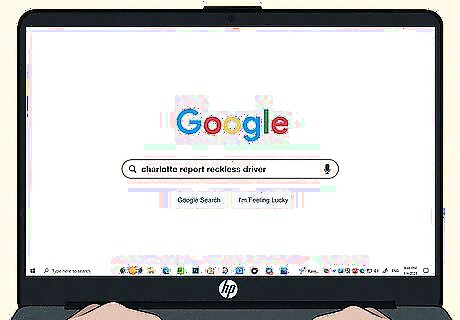
Check the website of your city or police. Many local police departments and city transportation departments have online forms where you can report reckless drivers. These forms might also be called driving complaint forms. Fill out the form carefully and be sure to include all relevant details about the incident and who was involved. To find out if this is available in your area, search online for the name of your city or county with the words "report reckless driver." For example, you might type the words "Charlotte report reckless driver" or "Orange County report traffic violation." You may need to send an email in certain situations. In this email, you might write, "I noticed a red Mustang speeding down I-95 this morning around 9:00 AM. They were weaving in and out of traffic and nearly collided with a truck. Thank you."
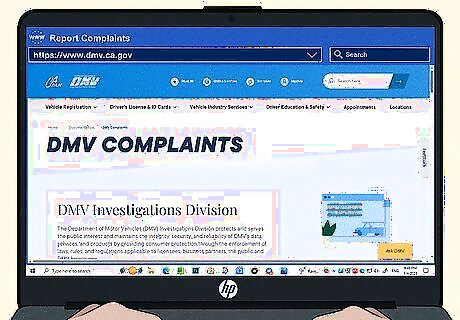
Inform a local DMV if someone you know is a reckless driver. If you know the identity of an unsafe driver, you can request for your local Department of Motor Vehicles (DMV) to give them a new driving exam. Some departments have online forms for this, but you may need to email others. In most cases, this information can be given anonymously. On this form, you will: Identify who needs to be re-examined. If possible, provide their driver’s license number or their license plate number. Provide a reason why they should be re-examined (medical issue, alcohol problem, worsening eyesight, etc.) State your relationship to the driver (family member, friend, court-appointed sponsor, etc.)
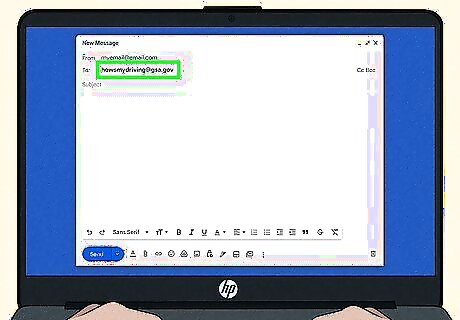
Email the government to report a government vehicle. In the U.S., any license plate number beginning with G is owned by the government. Send an email to [email protected] to report the reckless driver. In your email, include as much information as you can about the car and driver. If you have any photo or video evidence, be sure to attach that as well. Vehicles with license plate numbers that start with G specifically belong to the U.S. General Services Administration (GSA). Use this index to see the license plate codes for other government agencies.




















Comments
0 comment